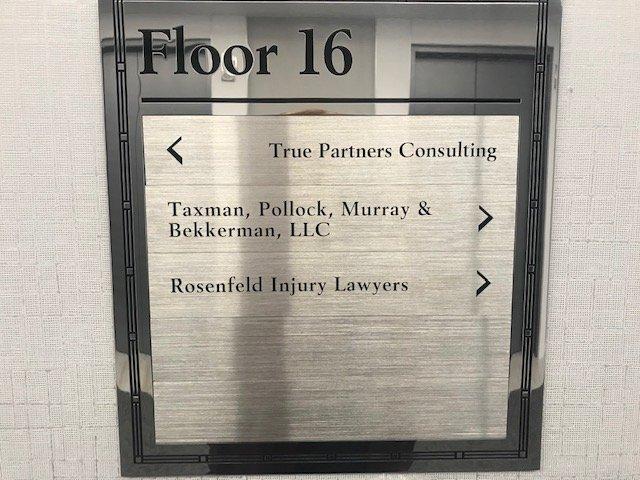Class Action Claims in Individual Injury Cases

Class action lawsuits in injury cases stand for a significant facet of the legal system, providing a means for groups of people that have actually endured comparable injuries or damages due to the actions or oversight of an accused to seek justice jointly. This post delves into the intricacies of course action suits in the context of injury, exploring their meaning, lawful framework, benefits and drawbacks, and remarkable instances.
Interpretation and Legal Framework
A course activity suit is a legal action where a group of people jointly bring a claim to court. These people, called class participants, have suffered comparable injuries or damages. In accident instances, this could imply damage brought on by faulty products, ecological disasters, or widespread negligence by corporations or companies. The situation is led by a depictive plaintiff, typically called the lead complainant or class agent, that stands for the whole course.
The lawful framework governing class action claims is intricate and differs by jurisdiction. In the United States, for example, the Federal Policies of Civil Treatment (Regulation 23) and different state laws offer the guidelines for conducting these legal actions. The course needs to be certified by the court, which needs conference standards such as numerosity, commonality, typicality, and competence of representation.
Benefits of Course Activity Legal Actions in Accident Instances
Performance and Economy: Class actions combine countless similar private cases right into one lawsuit, making the legal process more efficient and less costly. This is specifically beneficial in injury cases where individual claims may be as well tiny to warrant different lawsuits.
Strength in Numbers: By pooling resources, course members can pay for far better lawful depiction, which is particularly important when taking on big companies or entities with considerable lawful resources.
Harmony in Judgment: Class activities make sure a regular resolution for all participants of the course, avoiding the inconsistencies that could occur from specific claims.
Accessibility to Justice: They enable people who might not have the methods to submit individual lawsuits to look for settlement for their injuries.
Negative Aspects of Class Action Claims
Limited Control for Class Members: Person course participants have little control over the process, as the course representative and the assigned lawyers make many of the decisions.
Lower Individual Recoveries: While class activities make it financially practical to prosecute small claims, the individual recuperation for course members could be smaller sized contrasted to what might be acquired in a solo lawsuit.

Complexity and Size: These claims can be incredibly complicated and might take years to settle, which can be a significant disadvantage for those looking for prompt compensation for their injuries.
Notable Instances in Accident
Historically, there have actually been several top-level class action legal actions in the world of accident. For instance, the lawsuits against tobacco firms in the 1990s led to huge settlements and modifications in industry techniques. One more remarkable example is the litigation bordering the BP oil spill in 2010, where a class activity legal action played a critical role in compensating the victims of the environmental calamity.
The Process of a Class Action Claim in Injury
The process starts with the filing of a claim by the lead plaintiff on part of the course. This is followed by a qualification process, where the court determines if the situation meets the standards for a course action. After accreditation, the participants of the course are recognized and notified, and the lawsuit proceeds in a similar way to a common legal case, including discovery, test, and possible negotiation or judgment.
Chicago Personal Injury Lawyer If the course activity achieves success, the court will certainly accept a negotiation or go into a judgment. The compensation is then split among the course members according to the terms stated in the judgment or negotiation contract. It is very important to note that course participants commonly have the option to pull out of the course action and pursue private cases.
Lawful Depiction and Attorney Costs
In course activity suits, attorney fees are a critical aspect. Usually, attorneys representing the course work on a contingency fee basis, implying they just earn money if the course action succeeds. The court must approve the lawyer fees, which are typically taken as a percent of the settlement or judgment amount.
The Function of the Lead Complainant
The lead complainant plays a critical role in a class activity legal action. This private stands for the rate of interests of the entire class and functions carefully with the lawyers to develop the case. The lead complainant also bears certain duties, such as supplying testimony and taking part in the exploration process.
Difficulties and Objections
Course activity claims in personal injury instances are not without obstacles and criticisms. One significant problem is the potential for abuse by lawyers looking for rewarding negotiations. Additionally, the process can be so extensive and complex that it often diminishes the best goal of giving prompt justice to those who have actually been damaged.
Verdict
Class action legal actions play an essential duty in the injury lawful landscape, allowing teams of individuals who have actually suffered comparable harms to look for justice collectively. While they offer several benefits, consisting of efficiency, access to justice, and the capacity to take on powerful offenders, they also include obstacles such as restricted private control and capacity for lower recuperations each.
